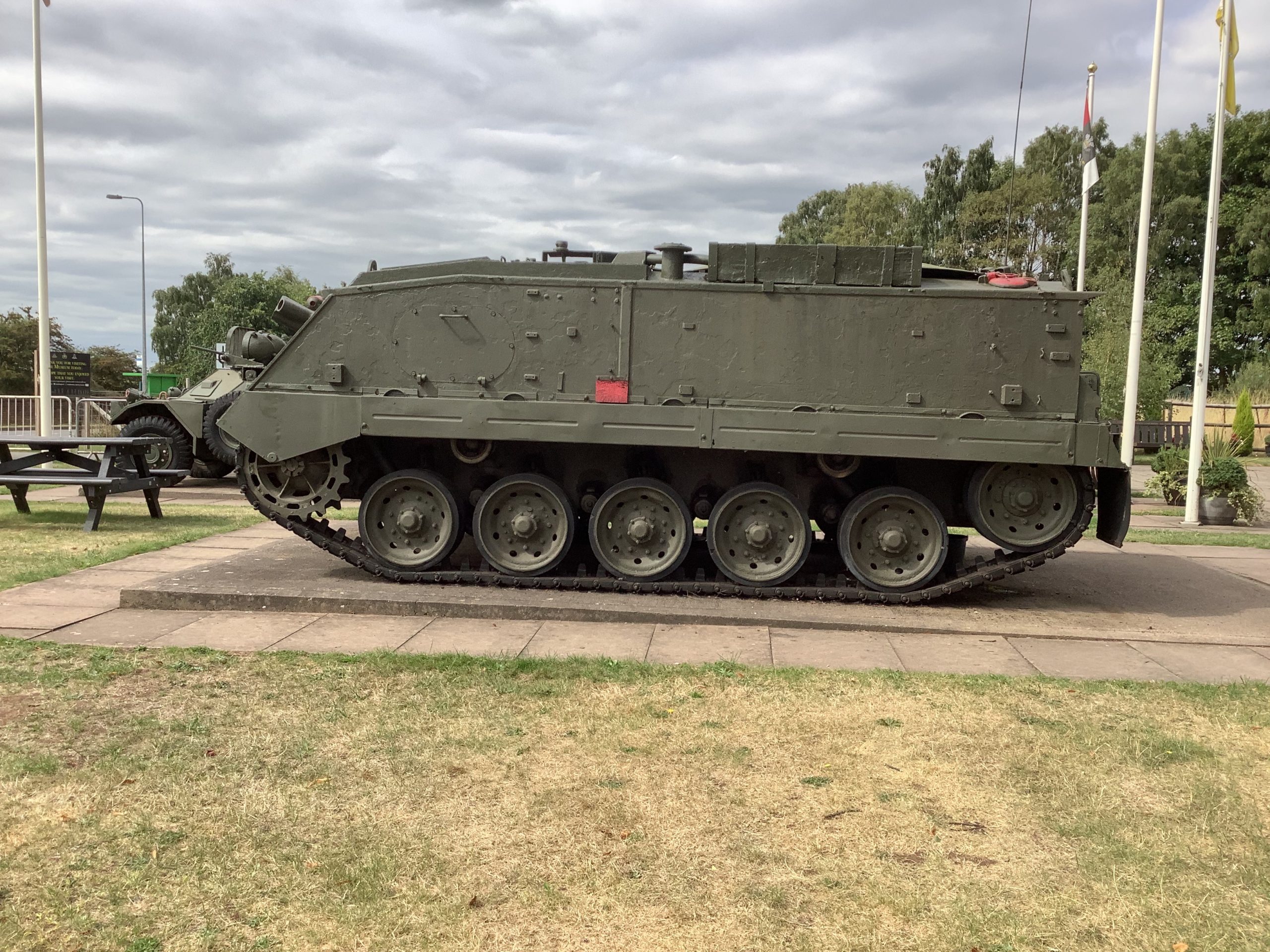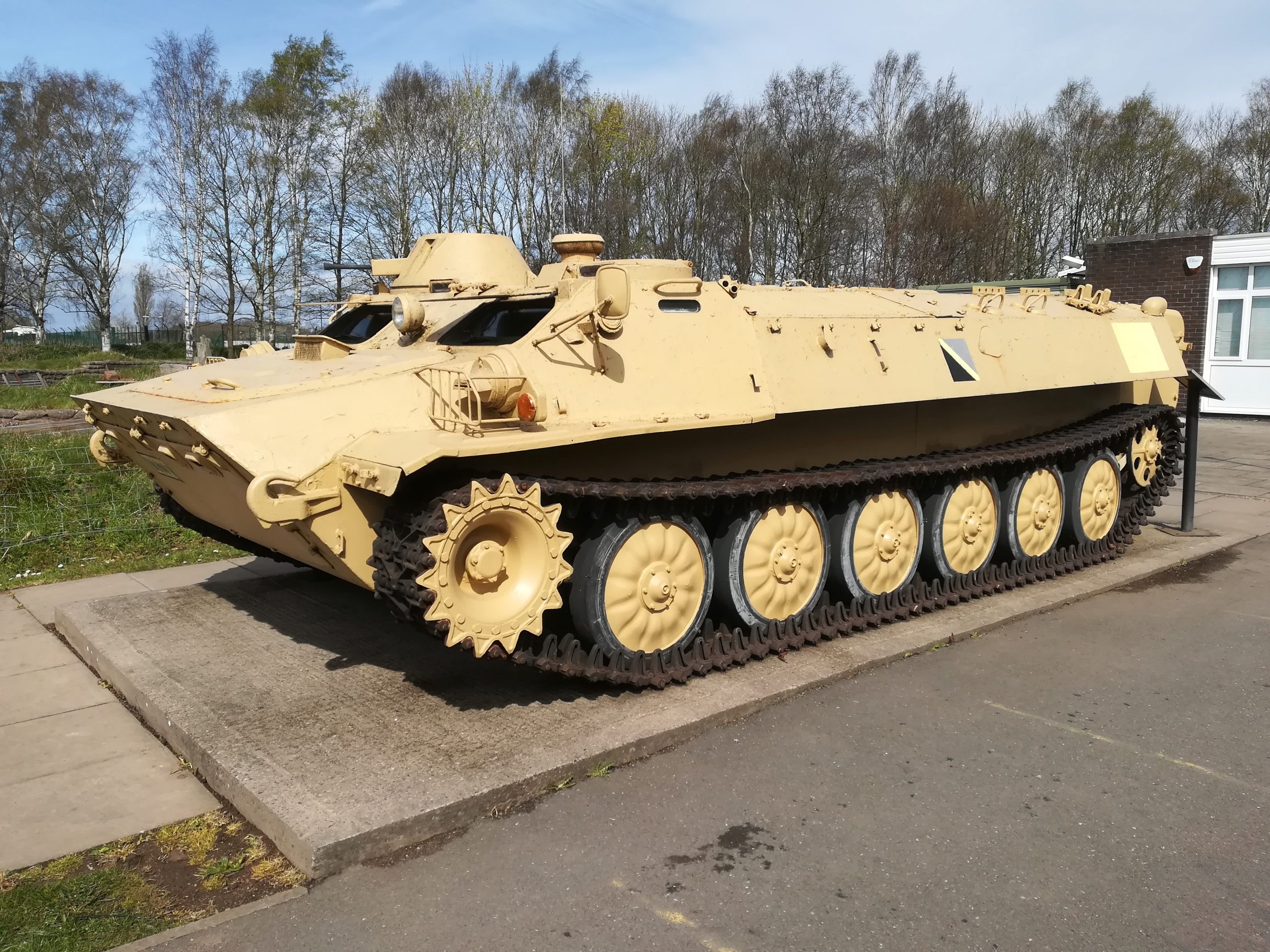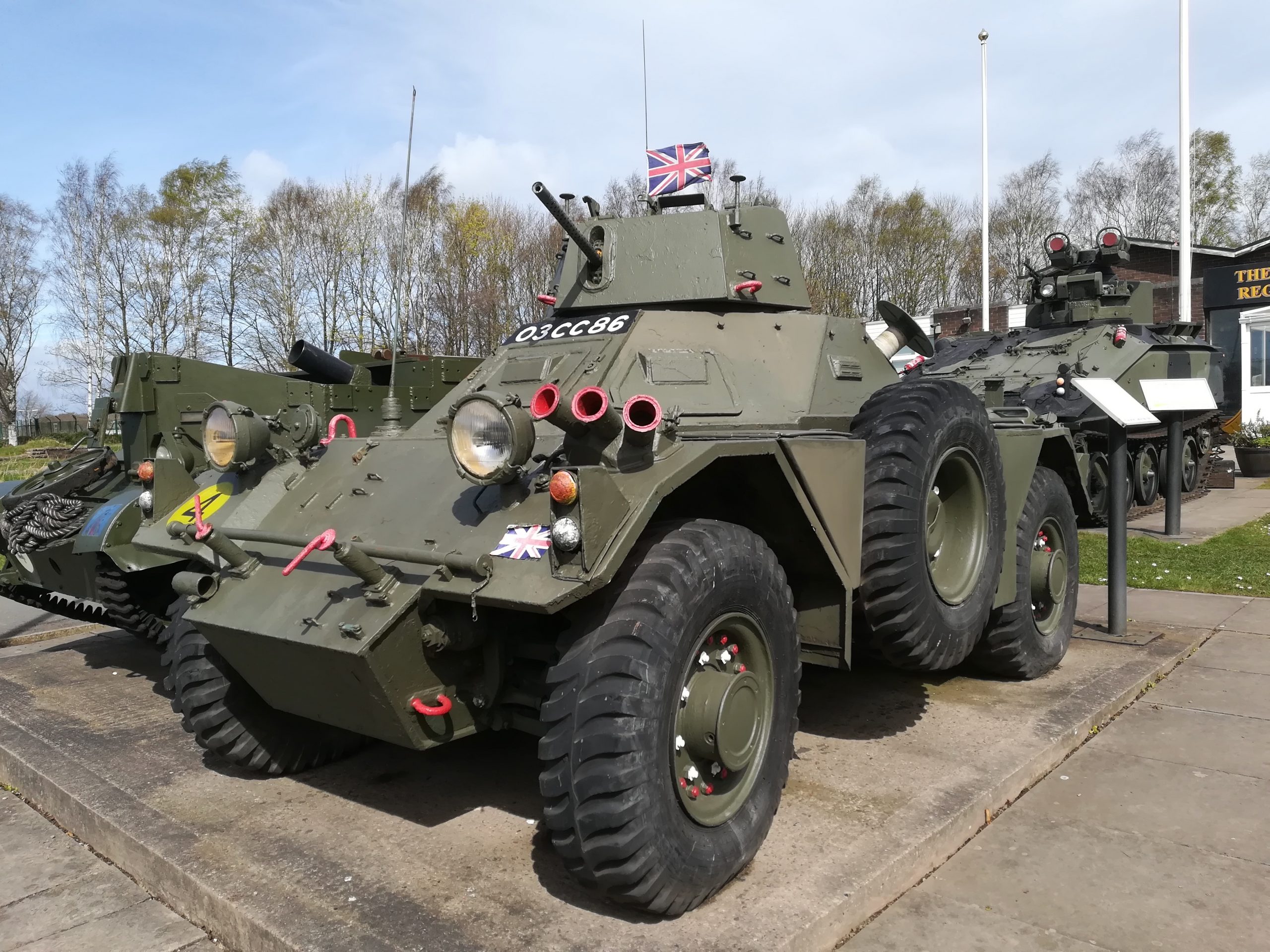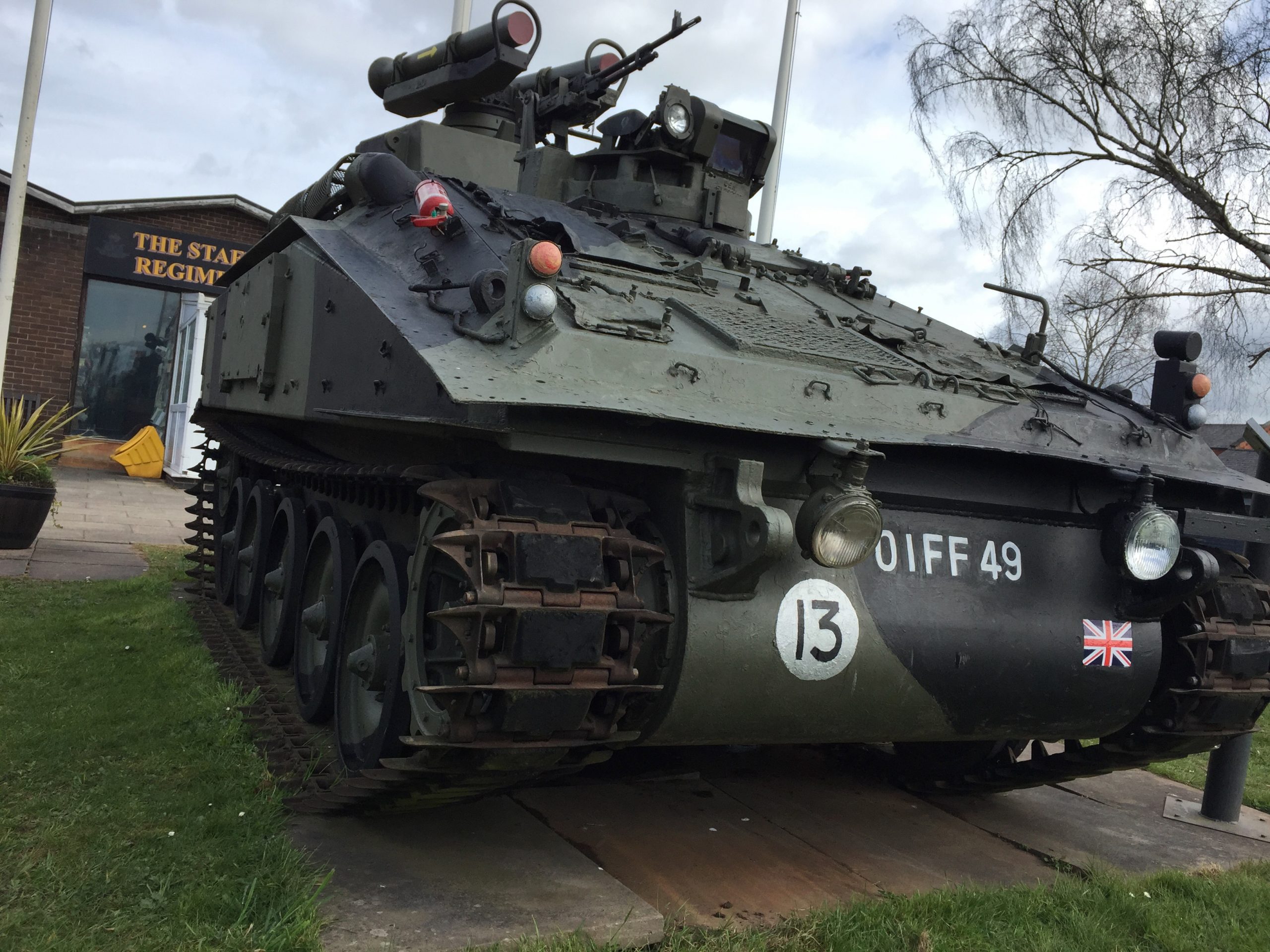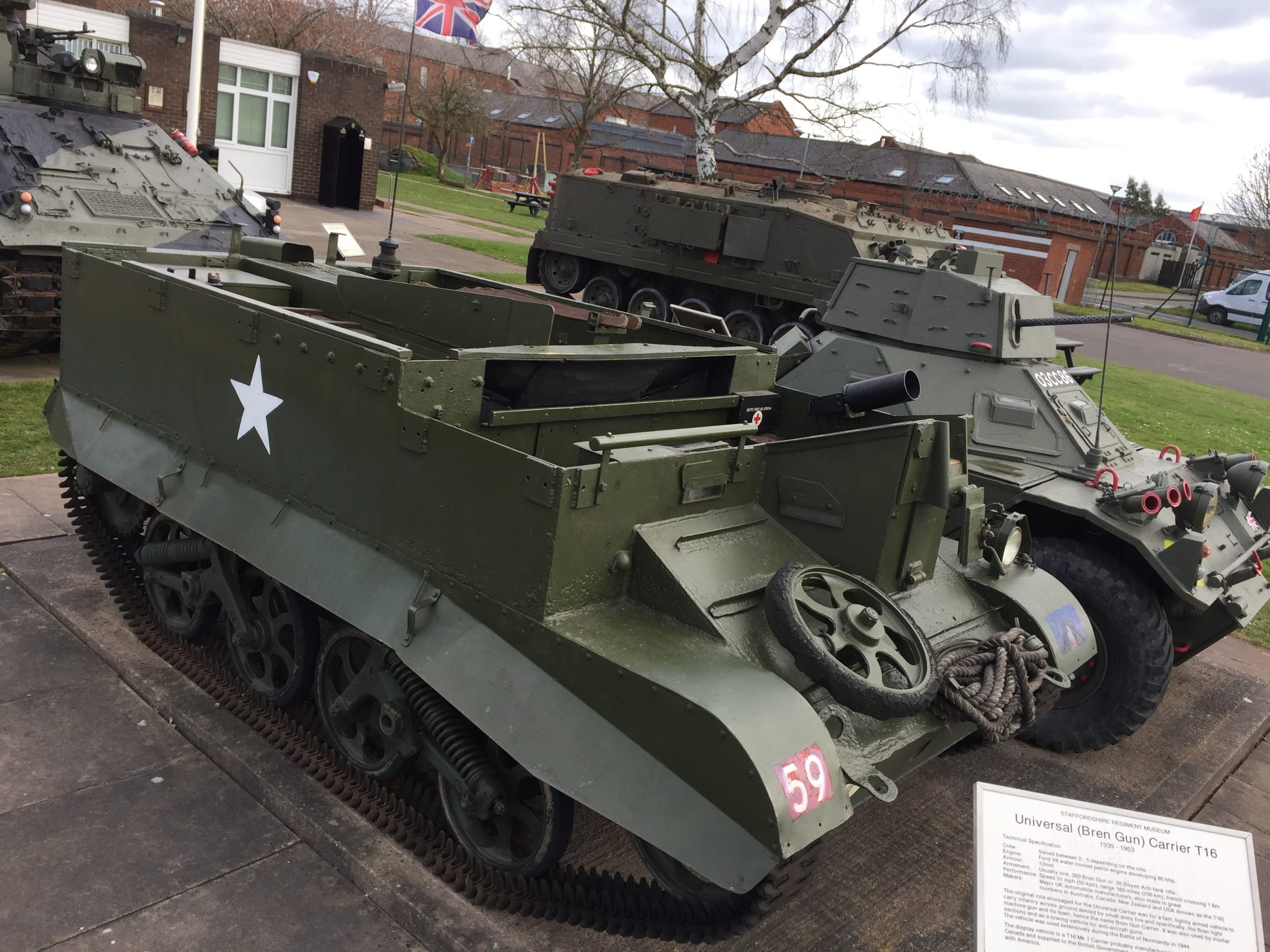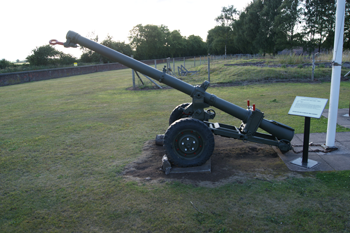The museum has an excellent collection of armoured vehicles on display, ranging from World War 2 up until the first Gulf War in 1991.
Examples of the vehicles can be seen in our photographic collection below.
Read More
The Mark 1 entered service in 1963. It was a multi-purpose vehicle with many variants including troop carrier, command centre and ambulance. It could also be used on water with a flotation screen attached and was designed to be used during chemical warfare conditions. This vehicle was acquired from the Museum of Transport at Beverley. Unfortunately during its service career this vehicle sustained some fire damage to the interior, however it is still a fine example of FV 432
Vehicle
FV 432 Mk 1/1 Personnel Carrier
Entered Service
1963 to present day
Key Specification
- Crew 2-10 depending on the role
- Engine Rolls Royce K60 multi Fuel
- Armour 12.7 mm
- Performance Speed 32 mph; on water 10 mph
- Makers GKN Sankey
Read More
This Russian built vehicle was originally designed for the cold Siberian Tundra and had a very good heating system which was useful in the cold desert nights. It has many uses as a vehicle and is fully amphibious, using its tracks to propel it through the water. This particular example was captured from the Iraqi Army during the First Gulf War.
Vehicle
Iraqi MTLB- Personnel Carrier and Gun Tower
Entered Service
1970’s
Key Specification
- Crew 2 + 11
- Engine YaMZ 238V, V-8 Diesel
- Armour 3-10mm
- Performance Speed 27 mph; on water 9 mph
- Range 310 miles
- Armament 1x 7.62mm machine gun
Read More
The first Ferret was produced in October 1952 and remained in production until 1972, by which time over 4,000 had been built. The Ferret is not an amphibious vehicle, although a deep fording kit is available. Various different types of Ferret were used by the Staffordshire Regiment from the 1950s and up until the 1990s, including service with the Regiment in the First Gulf war.
The Ferret has been restored inside and out by the museums volunteers and friends.
Vehicle
Ferret Mk 2/3 (VHF) Scout Car
Entered Service
1952
Key Specification
- Crew 2
- Engine Rolls Royce B69 Mk 6A petrol engine
- Armour 6-16mm
- Performance Speed 58 mph
- Range 190 miles
- Armament 1x 7.62mm or 1 x .30cal Browning machine gun and 6 grenade launchers
Read More
This Vehicle entered service in 1978 as a specialist infantry carrier part of the Combat Vehicle Reconnaissance (Tracked) family of vehicles. They were designed to be used by armoured Infantry battalions. In 1986 several of them were modified to carry two MILAN anti tank missiles, including this example. The Milan is a European wire guided S.A.C.L.O.S. (Semi. Automatic Command Line-of-Sight) anti-tank Missile. The missile is guided by a fine wire trailed behind the projectile when fired and therefore cannot be ‘jammed’ by enemy communications. The missile has an operational range 200/2000 metres
Vehicle
Spartan MCT Personnel Carrier
Entered Service
1978
Key Specification
- Crew 3 with 4 passengers
- Engine Jaguar J60 No. 1 mark 100b Petrol Engine
- Armour 2 MILAN missile launchers and 1x 7.62 machine gun
- Performance Speed 50 mph
- Makers Alvis
- Combat Weight 8.3 Tons
Read More
Developed prior to the Second World War the Universal or ‘Bren’ Gun Carrier became a mainstay of the British forces. It was used for a variety of uses including infantry support, towing equipment, casualty evacuation and assisting mortar sections amongst many others. It was used extensively during the invasion of North West Europe including the Battle of Normandy in 1944. Production continued after the the Second World War until 1960.
This example was produced by Ford in America and is longer than it’s British counterpart with an additional axle. It is steered using levers not a steering wheel as found in the British version.
This particular one came to the museum with a complete chassis but the body was an empty shell. However, since 2017 Museum volunteer Don Highman has worked with other volunteers to a restore the vehicle to near complete condition
Vehicle
Universal (Bren Gun) Carrier T16
Entered Service
1940
Key Specification
- Crew 2-5 people depending upon the role
- Engine Ford V8 water-cooled petrol engine
- Armour 12mm
- Performance Speed 31 mph with a range of 160 miles
- Makers Major UK automobile manufacturers
- Armament usually one .303 Bren Gun or .55 Boyes Anti-Tank rifle, Mk 1 4in smoke discharger
Read More
This type of gun was introduced in 1954 and was capable of disabling many enemy armoured vehicle at that time. It was designed to be used by weapons companies of Infantry Battalions and could be towed behind a Land Rover. It was part of family of BAT Gun (Battalion Anti Tank) including the MOBAT looking more like a conventional field gun with it’s protective shield to the light weight WOMBAT made from Magnesium Alloys. The CONBAT was equipped with a ‘spotting’ rifle attachment which could fire tracer rounds. If though the gun sight the tracer ammunition could be seen to be hitting the target, it was considered the main charge would do the same which was then fired.
Developments in armour meant that the gun was declared obsolete in 1984 and replaced by the MILAN missile system.
Vehicle
CONBAT Anti-Tank Gun
Entered Service
1954
Key Specification
- Calibre 120mm
- Range 1,200 yards
- Noise 200+ decibels

